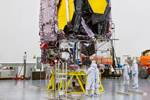NASA selects five companies to develop Artemis lander
Selected companies will develop Artemis lander design concepts, evaluating their performance, design, construction standards, mission assurance requirements, interfaces, safety, crew health accommodations and medical capabilities.
Artist concept of Artemis astronaut stepping onto the moon. Photo Credit: NASA
(Washington, D.C., U.S.) has selected five U.S. companies to help the agency enable a steady pace of crewed trips to the lunar surface under the agency’s program. According to NASA, these companies will make advancements toward sustainable human landing system concepts, conduct risk-reduction activities and provide feedback on NASA’s requirements to cultivate industry capabilities for crewed lunar landing missions.
The awards under the Appendix N broad agency announcement have a total combined value of $146 million, and the work will be conducted over the next 15 months. The companies that received awards are:
- (Kent, Wash., U.S.): $25.6 million
- (Huntsville, Ala., U.S.): $40.8 million
- (Littleton, Colo., U.S.): $35.2 million
- Northrop Grumman (Dulles, Va., U.S.): $34.8 million
- (Hawthorne, Calif., U.S.): $9.4 million
“Establishing a long-term human presence on the moon through recurring services using lunar landers is a major Artemis goal,” says Kathy Lueders, NASA’s associate administrator for human exploration and operations. “This critical step lays the foundation for U.S. leadership in learning more about the moon and for learning how to live and work in deep space for future missions farther into the solar system.”
The selected companies will develop lander design concepts, evaluating their performance, design, construction standards, mission assurance requirements, interfaces, safety, crew health accommodations and medical capabilities. The companies will also mitigate lunar lander risks by conducting critical component tests and advancing the maturity of key technologies.
According to NASA, these companies will ultimately help shape the strategy and requirements for future solicitation to provide regular astronaut transportation from lunar orbit to the surface of the moon.
NASA’s goals under Artemis include enabling a safe and cost-efficient long-term approach to accessing the lunar surface and becoming one of multiple customers purchasing services in a lunar transportation market. NASA says much of what the agency develops for the moon will be applied to future exploration at Mars.
NASA’s Artemis missions include landing the first woman and first person of color on the lunar surface, sending a suite of new science instruments and technology demonstrations to study the moon and establishing a long-term presence there.
Related Content
-
Revolutionizing space composites: A new era of satellite materials
A new approach for high volumes of small satellite structures uses low-CTE, low-cost CFRP cellular core, robust single-ply skins and modular panel systems to cut lead time, labor and cost for reflectors, solar arrays and more.
-
NASA launches composite solar sail into space
Sunlight-based propulsion system, supported by carbon fiber-reinforced booms, will undergo weeks-long testing to demonstrate and verify its capabilities.
-
Carbon fiber satellite arm reduces weight, simplifies assembly onto naval vessels
Satcom developer EM Solutions partnered with ACS Australia to replace an aluminum arm design with a 65% lighter, one-piece, corrosion-resistant carbon fiber/epoxy alternative.






